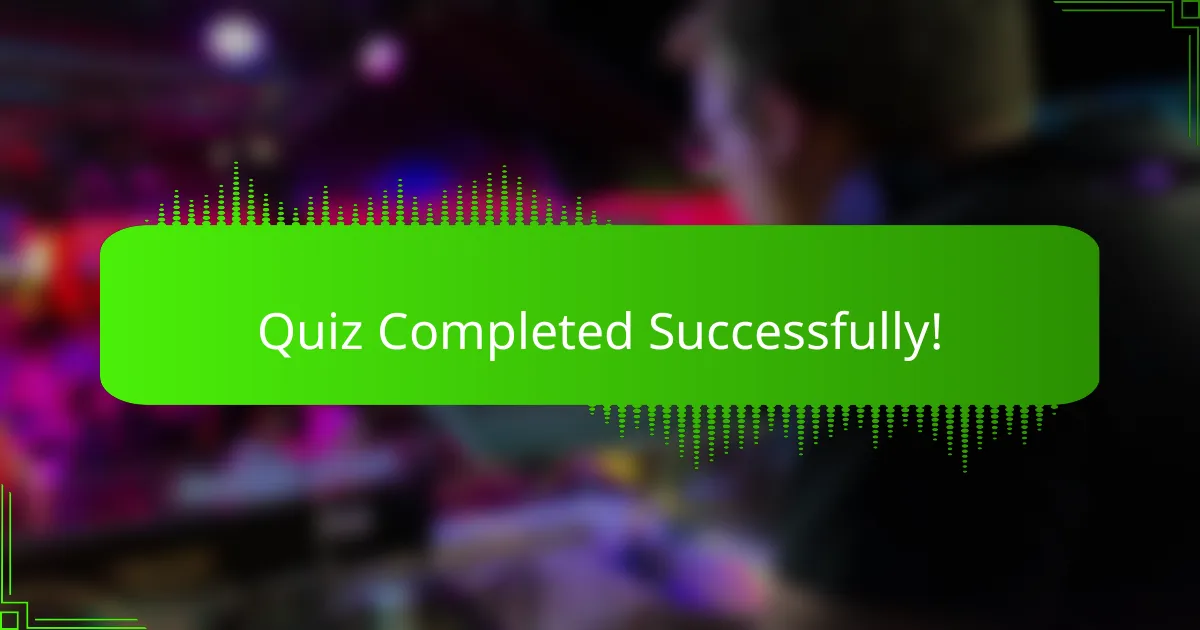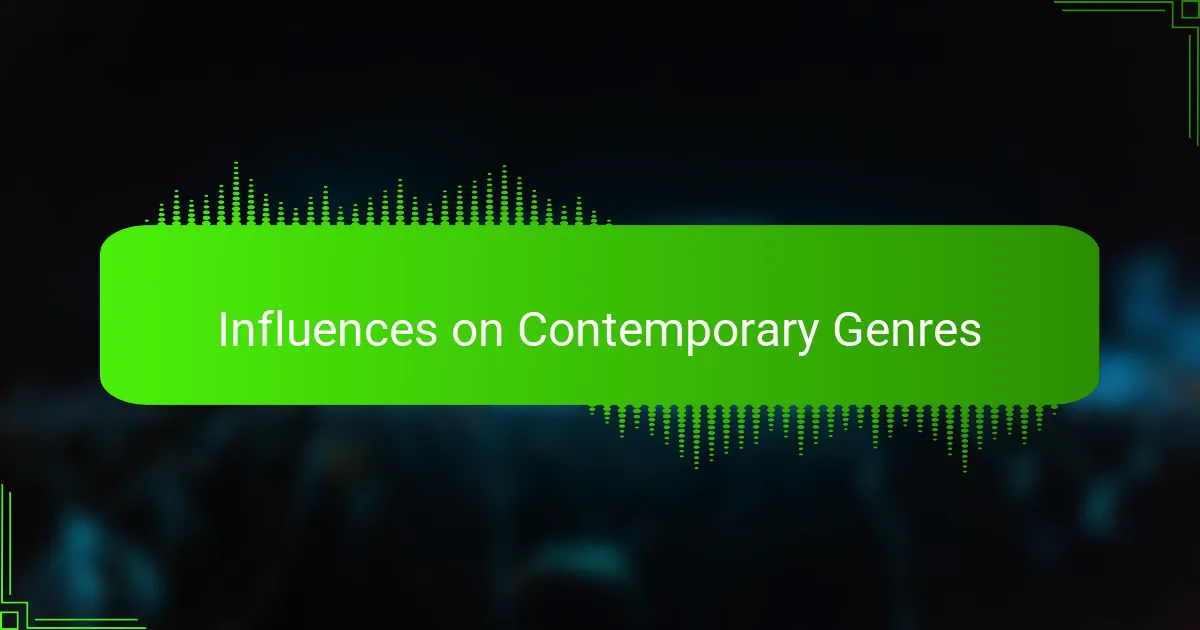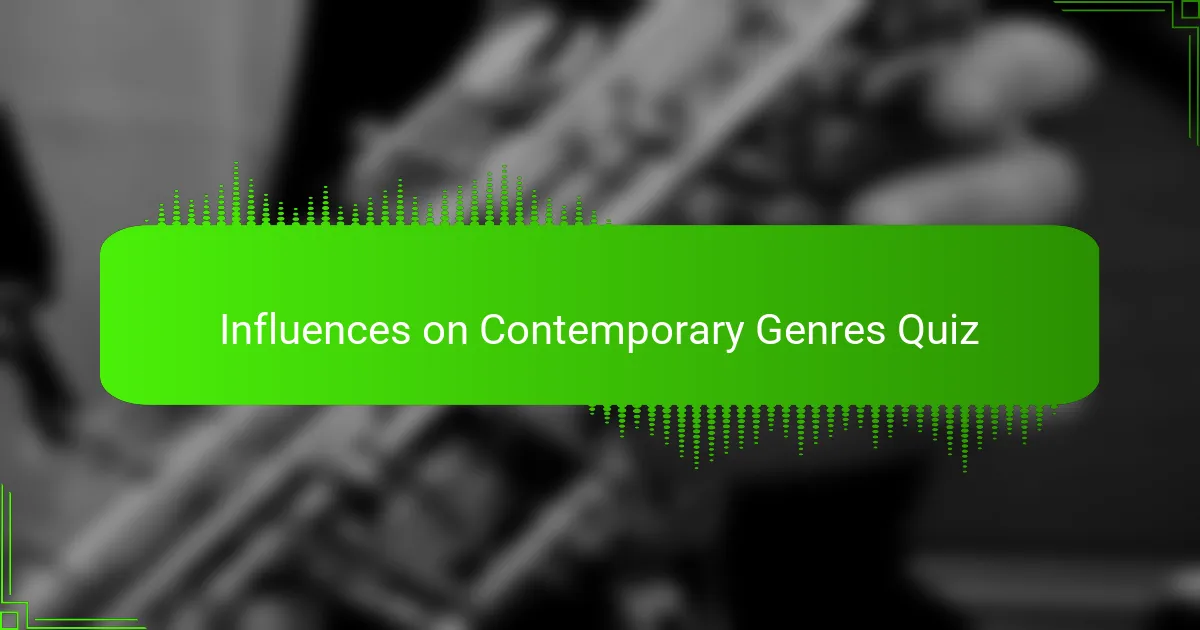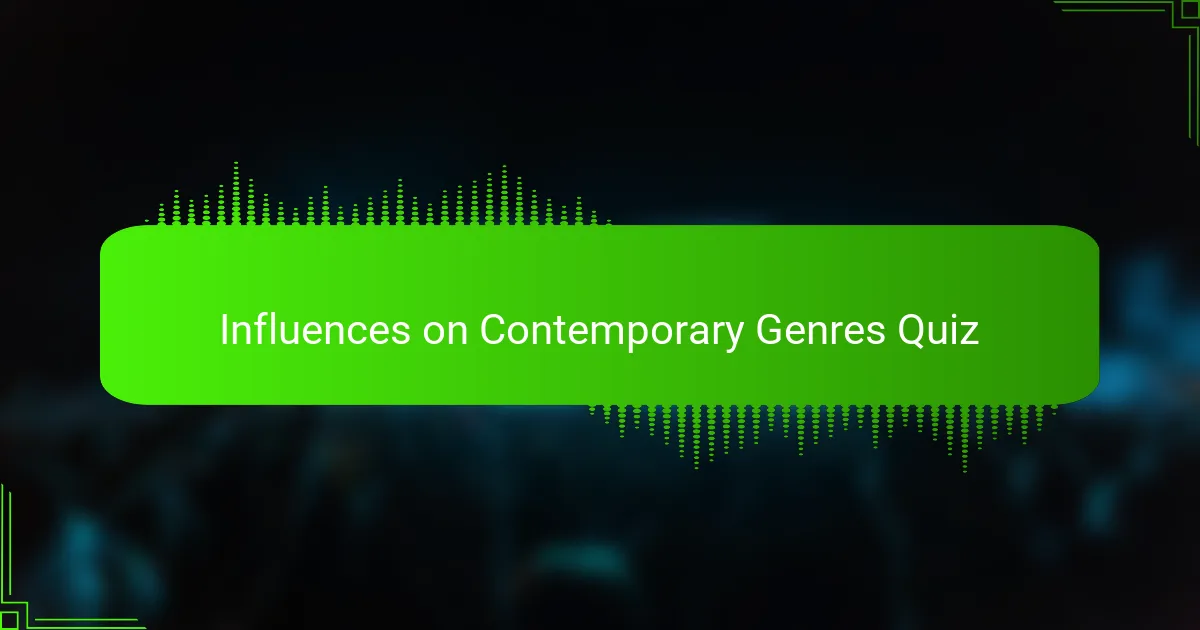
Quiz Completed Successfully!
Congratulations on finishing the quiz on ‘Influences on Contemporary Genres’! We hope you found it both enjoyable and enlightening. This quiz has highlighted key elements that shape the music landscape today, from cultural shifts to technological advancements. By engaging with this content, you’ve deepened your understanding of how diverse influences intersect in powerful ways within the music industry.
As you navigated through the questions, you likely discovered the rich tapestry of sounds and styles that define contemporary music. From the impact of social media to the evolution of various genres, each aspect plays a crucial role in the music we hear today. This knowledge not only enhances your appreciation of your favorite tracks but also opens your ears to new possibilities in music discovery.
We invite you to continue your exploration by checking out the next section on this page, which offers more in-depth information about ‘Influences on Contemporary Genres’. Here, you can expand your knowledge even further and uncover new insights that enrich your understanding of modern music. Happy learning!

Influences on Contemporary Genres
The Evolution of Music Genres in the Digital Age
The emergence of the internet has significantly transformed music genres. Platforms like Spotify and Apple Music allow for diverse genre exploration, leading to genre-blending. Artists like Lil Nas X exemplify this by merging country and hip-hop, reshaping traditional boundaries. This digital accessibility fosters a global music culture, impacting contemporary genres.
Social Media’s Role in Genre Popularization
Social media platforms are crucial in amplifying musical genres. TikTok, for instance, has propelled songs into viral hits. The platform’s algorithm encourages short, catchy snippets, popularizing genres such as trap and hyperpop. Artists like Doja Cat and Olivia Rodrigo gained fame through social media engagement, illustrating its power in contemporary music.
Global Influences Shaping Modern Sounds
Globalization has allowed various cultural influences to converge in contemporary music. Genres like K-pop, represented by groups like BTS, incorporate diverse musical styles and visual aesthetics. The fusion of different cultural elements enriches modern genres, leading to innovative sounds that resonate worldwide. This cross-cultural exchange fosters a rich musical landscape.
Collaboration Across Genres
Collaborative projects across genres are reshaping contemporary music. High-profile collaborations, such as Billie Eilish’s work with Khalid or Ed Sheeran’s genre-crossing tracks, challenge genre norms. These partnerships not only appeal to diverse audiences but also blend stylistic elements, leading to unique innovations. Such collaborations are defining characteristics of today’s music scene.
The Impact of Streaming Algorithms on Genre Production
Streaming algorithms significantly influence genre production and consumption. Services like Spotify use data to curate playlists that guide listener preferences. This data-driven approach affects which genres dominate the charts. As a result, artists often tailor their music to align with algorithmic trends, showcasing the powerful interplay between technology and contemporary genres.
What are the primary influences on contemporary music genres?
Contemporary music genres are primarily influenced by technology, cultural shifts, and globalization. Advances in technology, such as streaming platforms like Spotify and Apple Music, have altered how music is produced and distributed. Cultural trends, such as the rise of social media platforms like TikTok, have transformed how artists engage with audiences. Additionally, globalization has led to cross-genre collaborations, blending styles from diverse musical backgrounds, reflecting influences from artists like Bad Bunny in reggaeton rather than traditional pop.
How do social media platforms influence contemporary music genres?
Social media platforms influence contemporary music genres by facilitating artist-audience interaction and promoting music virality. Platforms like Instagram and TikTok allow artists to share clips of their music, reaching wider audiences rapidly. For instance, the song “Old Town Road” by Lil Nas X gained massive popularity through viral challenges on TikTok, demonstrating the platform’s power to influence hit songs. These trends often dictate the style and sound that become popular.
Where can contemporary genres be heard or accessed most widely?
Contemporary genres are most widely accessed through digital music streaming services, particularly Spotify and Apple Music. These platforms have revolutionized how music is consumed, providing access to a vast library of genres anytime and anywhere. According to Statista, as of 2023, Spotify holds over 500 million users, highlighting its significance in promoting contemporary music genres globally.
When did digital technology start significantly impacting contemporary music genres?
Digital technology began significantly impacting contemporary music genres in the early 2000s with the advent of digital downloads and later streaming services. The launch of iTunes in 2001 marked a major shift in music consumption, allowing users to purchase individual songs. The rise of streaming services from the mid-2010s changed the landscape, making it easier for listeners to explore diverse genres without purchasing full albums. This shift is correlated with the diversification of trends in popular music.
Who are key figures influencing contemporary music genres today?
Key figures influencing contemporary music genres today include artists like Billie Eilish, Bad Bunny, and Lil Nas X. Billie Eilish has pushed boundaries in pop music with her unique sound and aesthetic, while Bad Bunny has popularized Latin trap and reggaeton globally. Lil Nas X has exemplified genre-blending and innovative marketing strategies, utilizing social media to reach audiences. Each of these artists has reshaped their respective genres significantly in recent years.

